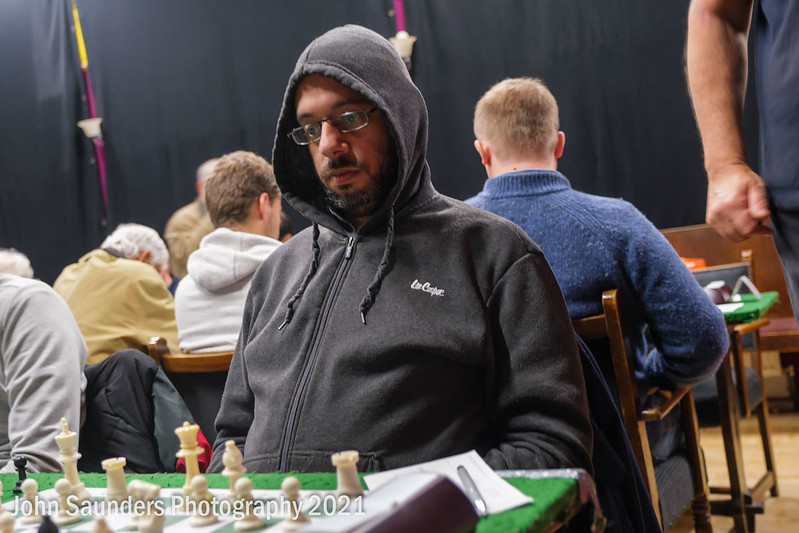Adam Nakar
As someone who is quite adept at getting himself into difficult positions, I can be quite adept at creating difficulties for my superior opponent. One of my favourite saves comes from opposite-colour Bishop endgames, where the game may be a draw even if two pawns down. As an example, consider this position (A Nakar vs M Shurmer, Kingston vs Surbiton 2, TV2, 2/11/21) black to move:
This is clearly losing for White, as Black is a piece up and it’s only a matter of time before the a, c and/or e pawns fall. However, here Black went for an option that he was sure he could win:
29 …Nxa4?!
The idea is that Black gets three pawns for the Knight, and it should be easy to promote one of those extra pawns. White has nothing better than to accept this:
30. Bxa4 Rxc4 31. Bd7 Rxe4
White to move now has a defensive resource: opposite colour bishops! To enter into such a position is always very risky for the stronger side, as the fact there are colours that your piece can’t control and the defender can makes pushing the extra pawns challenging. This is still losing for White, mind – but to prove how difficult it can be to win, here’s the position a few moves later:
Black has lost one pawn on the kingside, unable to cover all those on light squares. However, he’s still 2 passed pawns up, and even has the right Bishop covering the outside passer, so how hard can it be?
Actually, things are already very difficult. The a-pawn cannot be defended, and the d-pawn’s progress is covered by the White Bishop. Black decides to play:
43….Rb2+ 44. Rxb2 Bxb2
Now we have an opposite colour Bishop ending. Black, two pawns up, is thinking this will covert in just a matter of time.
White, however, plays to four principles:
- Use the King and Bishop to blockade the pawns.
- Also use them to ensure Black’s King cannot get in a position to shepherd the pawns.
- Be stubborn! Play on, not to win, but to draw.
- Be patient. What do you think your opponent will do if you offer them a draw?! You have to play calmly, carefully, hold firm, and wait for your opponent to accept that they have no way through.
The following moves, whilst not perfect, are far from unreasonable, and do illustrate how hard it is for Black to make progress, especially as the time ticks down towards the end of a long game:

Adam Nakar

